Nikon D5 Nauticam
Nauticam NA-D5 Housing for Nikon D5 camera
NO LONGER IN PRODUCTION
Nauticam housings are evolutionary marvels, with advancements from previous systems providing the foundation that new models are built on. The new Nauticam NA-D5 housing incorporates advances from the NA-D4 that came before it, but features enhanced ergonomics, a more sophisticated flash triggering system, and reduced size / weight thanks to cutting edge manufacturing processes.
NA-D4 was a significant elevation of the Nauticam DSLR housing game. Key controls, such as ISO, Video Record, and Playback, and Info were dramatically routed out to the housing grips. Nauticam recognizes that advanced DSLR cameras, and advanced DSLR users, rely on these functions more than ever to realize the full potential of advanced imaging systems.
Advanced high iso and video functionality in modern DSLR cameras has redefined what “essential controls” are really essential. Buttons that seem like an afterthought in the D5 camera control layout, such as Info (which displays shooting data on the 3.2″ color lcd screen), are critical for use in the housing. This button is routed to the left handle for convenient access. AF-ON, Movie Record, Playback, ISO, Pv, Fn1, Fn2 and Live View are all handled similarly. Considerable design and manufacturing resources go into this ergonomic reshuffling, but the benefit to the user experience makes is worth the effort.
EXTERNAL FLASH TRIGGERING
The entire external flash triggering system has has been reworked from the ground up in NA-D5, increasing ease of use, setup convenience, and reliability. A new LED flash triggering system is standard in every housing.
The Nikonos style bulkheads included in NA-D4/NA-D4s have been replaced by an integrated LED flash trigger. This optical flash trigger can fire at the full 14fps of the camera (mirror locked up). Optical systems, with fiber optic cables linking the external flashes to the housing, are far more reliable than any electrical sync cable system.
The LED trigger circuitboard is mounted inside the housing, and connected to the camera with a hotshoe cable. This new system is more powerful than the hotshoe mounted LED triggers used in the past, and is compatible with all currently available optically triggered flashes! Powered by two CR2032 batteries, battery life is measured in the tens of thousands of flashes, driven by incredibly efficient electronics. With good batteries, we expect 3-5 years of service, up to 50,000 exposures.
Users of legacy flashes without optical triggering are able to add accessory Nikonos (26074) or Ikelite (26075) style bulkheads for electrical flash sync. These bulkheads plug into the LED trigger board for clean cable routing, and reliable connection.
The new AF-Mode Lever is a significant improvement, and one based on feedback from Nauticam customers in the field. Nikon AF Area modes have become so powerful that shooters are regularly switching between 3D Tracking, Auto Area AF, and Single Area modes. The AF-Mode lever is now easily located by feel from the left handle! The less critical AF-M lever has been replaced by a knob, making it less likely to be inadvertently bumped into manual focus.
Fn1 and Fn2 are also located here, accessed by an oversized rocker just forward of the handle. These assignable controls can be mapped to one of numerous functions for quick access.
Extensive Customization for a Tailored Ergonomic Experience
Professional Nikon cameras are known for to be extensively customizable. NA-D5 offers access to more of these functions than any previous Nikon DSLR, with the ergonomic treatment that have made Nauticam housings legendary.
Pv is routed from the lens mount, and placed just under the right handle. Fn1 & Fn2 are moved all the way to the left side of the housing to avoid crowded right hand grip.
These custom functions can be overwhelming at first, but the creative options they unlock can be incredibly valuable in the field. In short, these assignable buttons mean less time digging through camera menus to change camera functions, and more time capturing the scene as it unfolds.
There isn’t a right way configure these systems. Every photographer and shooting scenario has unique demands. Some ideas are listed below!
- 1 Step Spd / Aperture, allows changing exposure settings in full f-stop increments. Think about changing from a wide angle scenic mode with relatively open aperture and slow shutter speed to a close focus wide angle shot that requires a closed aperture to shrink a sunball.
- My Menu, a customized panel with frequently accessed menus settings
- Access Top Item in MY MENU, actually jumps into a frequently accessed sub menu structure for the top level My Menu selection, saving at least two button presses. (ie min shutter speed in auto iso mode, or quickly define a preset white balance)
- Quickly access another metering mode, toggling between the selected metering pattern and an alternate that more appropriately mesures the current scene.
- Flash disable / enable, this is a big one! Toggles external flashes on and off, allowing a switch between artificial light shooting (continuous shooting speed limited by flash recycle, and shutter speed limited by the strobe max sync speed at 1/250) to silhouette mode using only ambient light (full 12 fps continuous shooting speed, unrestricted flash sync speed).
- AF-area mode + AF-ON – very cool functionality, for a quick way of accessing a focus mode other than the mode currently assigned and activating it while held down. Placed at the right thumb via the re-positioned PV lever, the current focus mode be overridden with something like auto area focus for quick grab shots where there isn’t time to move the selected autofocus point.
TECHNICAL SPECIFICATIONS
- Depth Rating: 100m
- Weight: 3.67kg
- Dimensions: 357mm (W) × 224mm (H) × 148mm (D)
- Port Opening: N120




































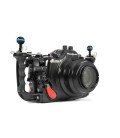






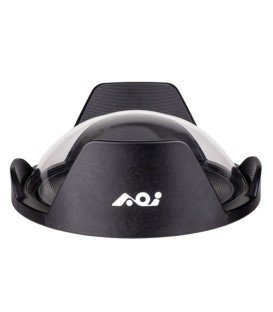
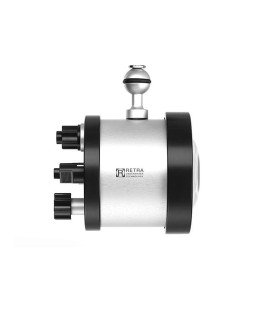
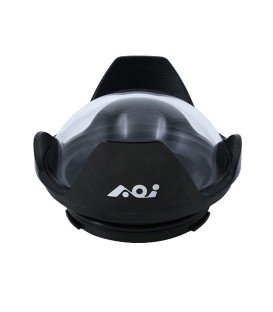
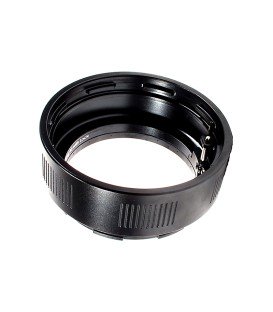
Get Social